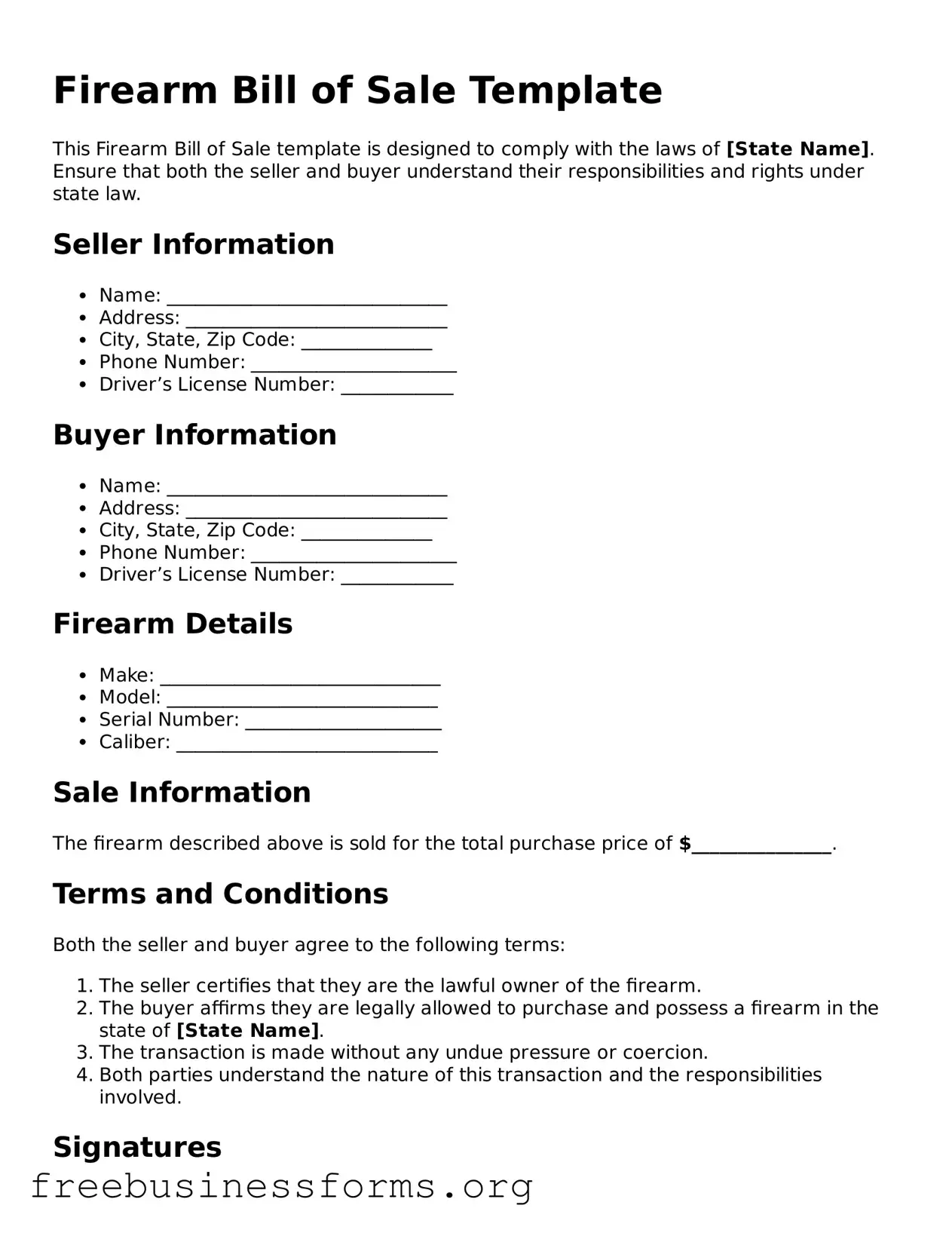The Firearm Bill of Sale form is a critical document in the transfer of firearm ownership between individuals. This form serves as a legal record, detailing the specifics of the transaction, including the names and addresses of both the buyer and seller, the date of the sale, and a description of the firearm being sold, such as its make, model, and serial number. Additionally, it often includes information about the condition of the firearm at the time of sale, ensuring that both parties are aware of any potential issues. The form may also outline any warranties or guarantees provided by the seller, which can be important for the buyer's peace of mind. By completing this form, both parties acknowledge the transfer of ownership and comply with applicable state and federal laws regarding firearm sales. Properly executed, the Firearm Bill of Sale not only protects the rights of both the buyer and seller but also establishes a clear chain of ownership, which can be crucial in the event of future legal inquiries or disputes.
